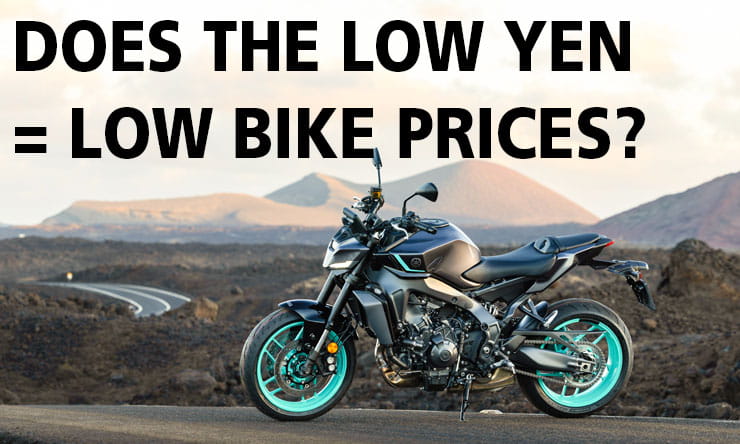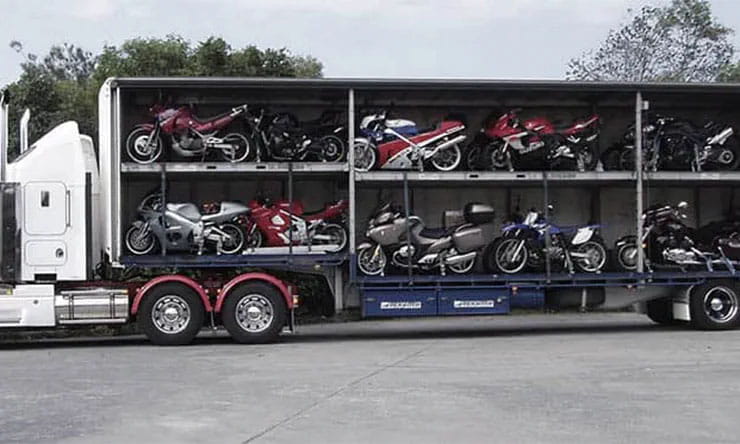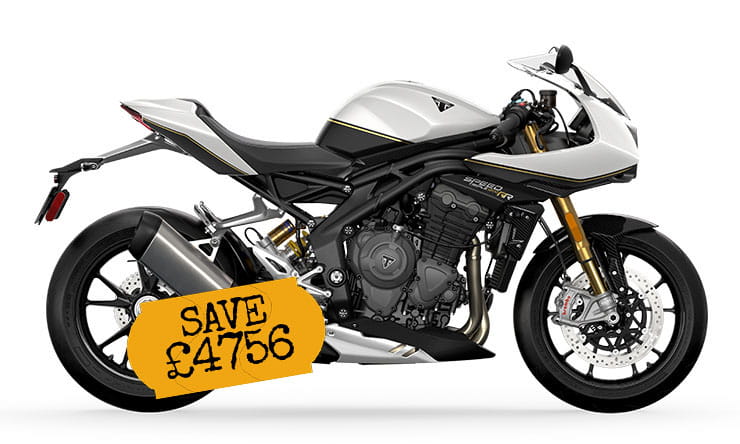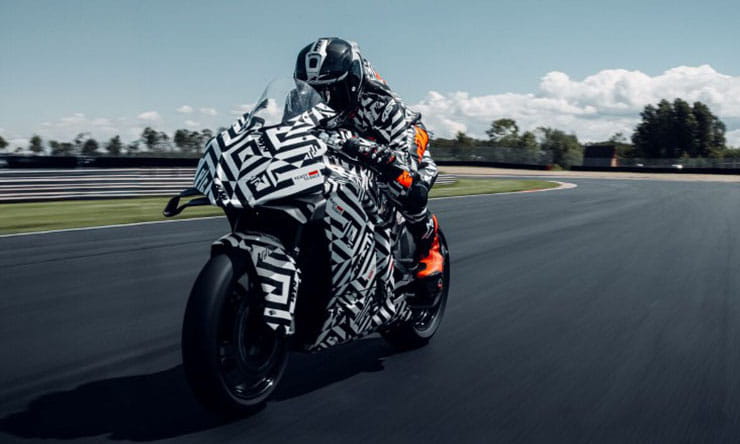The Japanese yen has hit its lowest value against the US dollar since the end of the ‘bubble era’ in 1990 and the lowest against the UK pound since the 2008 global financial crisis – but that doesn’t mean the market is about to be flooded with ultra-cheap Japanese bikes.
Before we delve deeper into how it impacts the market, what’s going on with the Japanese yen at the moment? The answer is that this is simply a continuation of decline that’s been ongoing for years. Japan’s economy has languished in the so-called ‘lost decades’ since the start of 1990, when the Japanese economic miracle – the breakneck growth that was sustained from the end of WW2 to the dawn of the nineties – came to a screeching halt. The last part of that growth, known as the bubble era or bubble economy, from the mid-80s until 1990, saw perhaps the most remarkable era of motorcycle development that the world has ever experienced. The GSX-R750, the Honda Fireblade, any one of the jewel-like 400cc and 250cc four-cylinder Japanese bikes, and countless oddball experiments along the way (NR750, anyone?) all stemmed from the bubble era, with launches echoing into the early to mid-1990s as projects that started development during the late 80s reached showrooms.
It was in 1990 that the bubble burst and ever since then Japanese economy has stagnated, with flatlining GDP-per-capita as other countries (yes, even the UK) have achieved substantial growth.
There’s been a particular slide for the yen since 2020. In May 2020 there were around 130 yen to the pound, or 106 yen to the dollar, but today there’s nearly 200 yen to the pound and close to 160 yen to the dollar. In other words, the Japanese currency is only worth two thirds of its 2020 value. That comes in part because the Bank of Japan has opted to keep interest rates low, aiming to encourage inflation, in recent months and years. You probably don’t need reminding that the Bank of England, like many central banks, has done the opposite, pushing interest rates up to stem inflation.
In theory that’s good news for tourists visiting Japan and for Japanese companies exporting their goods – like motorcycle manufacturers. They get more yen for every dollar or pound, upping profits and allowing them to be more aggressive with their pricing. But it’s not that simple, so don’t expect to see a sudden influx of ultra-cheap, high-end Japanese bikes hitting showrooms.
There are several reasons for that. For a start, the ‘Big Four’ Japanese bike firms are international corporations now, spread far wider than Japan. They have manufacturing facilities all over the globe and source components and expertise just as broadly. That means that while the bottom line in their annual reports might read in yen, they’re actually dealing with multiple economies around the world. That broader manufacturing base is something that’s grown significantly since the end of the bubble era, which means the Japanese bike companies don’t get the same benefit from a weak yen as they did 30 years ago.
There’s also a substantial delay between currency fluctuations and a knock-on effect on product prices. For example, the bikes Honda, Yamaha et al are selling in the UK this year will getting imported at wholesale prices that were agreed several months ago, so even if the latest drop in the yen’s value turns out to be a sustained one, it’s unlikely to be felt in showrooms here until 2025.
How have bike prices changed over the last 30 years?
Are today’s Japanese bikes more or less expensive than they were three decades ago? The answer is… it depends on the bike.
Here’s how a couple of popular long-running models have faired since 1994:
1: Honda CBR600F/CBR650F/CBR650R
Honda’s four-cylinder CBR600F was an icon of the late 80s and early 90s and its spirit lives on today in the CBR650R (the CBR600RR having departed in a much more aggressive, sportier direction in the early noughties). With inflation taken into account, today’s bike is much, much cheaper than its forebear.
Back in 1994 a CBR600F would set you back £6525, equivalent to £13,258 in 2024 pounds. In 2004 the RRP was £6654 (£11,565 in 2024 money), and in 2014 the CBR650F that replaced it cost £7399, which equates to £9846 in 2024 once inflation is taken into account. Today, a new CBR650R comes in at £8599. That means the RRP has risen by about 32% over three decades, but should have doubled if it was to keep up with inflation.
2: Honda Fireblade
The defining superbike of the early 90s, Honda’s Fireblade, set owners back £8655 in 1994. Adjusted for inflation, that would be the equivalent of £17,587 in 2024 pounds. By 2004, despite some substantial upgrades, the Blade’s price had barely changed at £8739, equating to £15,189 today. Since then, though, it’s risen fast. In 2014 a Fireblade cost £14,999, which would be just a smidge under £20k in today’s money, and the latest generation machine in 2024 costs £23,499. So, the Blade’s RRP has grown by more than 270% since the 90s, outstripping inflation.
If you’d like to chat about this article or anything else biking related, join us and thousands of other riders at the Bennetts BikeSocial Facebook page.






